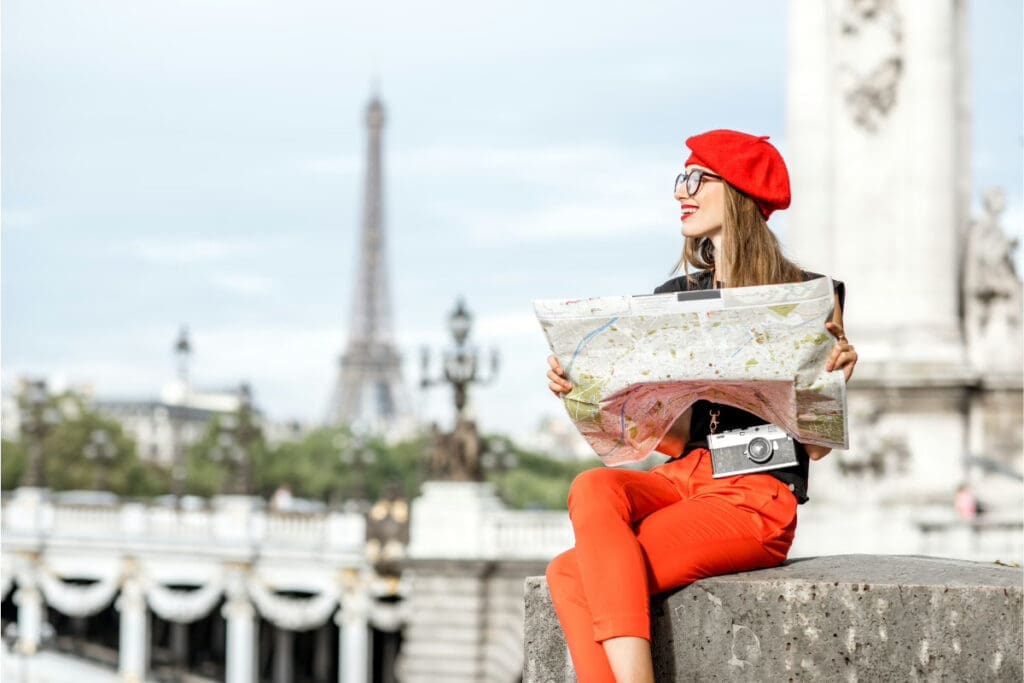Tourist attractions in France never fail to capture the imagination. From world-famous monuments to sleepy village squares, France sets the scene for unforgettable moments. Whether you’re drawn in by the history, the food, or those picture-perfect landscapes, every corner has its own tale.
Today, travelers fly in from everywhere—New York to Tokyo, Sydney to São Paulo—ready to check famous places off their lists. Is it the romance of Paris, the sparkle of the Riviera, or the timeless charm of the countryside that calls to you? Or maybe, just maybe, it’s the way France combines old with new at every turn.
Let’s set out on a grand loop of the best places to visit in France. Create your own story by mixing ancient wonders, famous museums, blissful beaches, tasty food, and a dash of magic only the French can provide.
Contents
- 1 The Timeless Allure of Paris
- 2 Glittering Palaces and Gardens
- 3 Exploring Magical Countryside Villages
- 4 Coastal Wonders and Sun-Soaked Escapes
- 5 Journey to French Heritage Sites
- 6 Wine, Food, and Flavors of France
- 7 Natural Beauty and Outdoor Thrills
- 8 Alpine Splendor and Winter Retreats
- 9 Undiscovered Gems and Local Secrets
- 10 Tips for Crafting Your Ultimate French Itinerary
- 11 Conclusion: Embrace the Best of France—A Journey for Every Traveler
- 12 Got questions about Tourist Attractions in France? Here are the answers travelers look for most
The Timeless Allure of Paris

No trip to France feels complete without at least a little time spent in Paris. Often called the “City of Light” (La Ville Lumière), Paris glows with art, history, and style. Cobblestone streets, cozy riverside paths, and bustling bakeries add to its lively heart. This city blends old legends with new trends, creating a place that never seems to get old.
The Eiffel Tower: Beyond the Iconic Selfie

The Eiffel Tower is so much more than a picture-perfect background. Built for the 1889 World’s Fair by Gustave Eiffel, the tower draws millions every year. From the top, you get unbeatable views across Paris—the rooftops, the Seine, and the distant hills. For something extra special, visit at night. The twinkling lights make it pure magic.
Many people picnic on the Champ de Mars, watching the changing colors. Inside, you’ll find hidden treasures too—like stories about the builders and sketches of old Paris.
Louvre Museum: Meeting the Mona Lisa and More
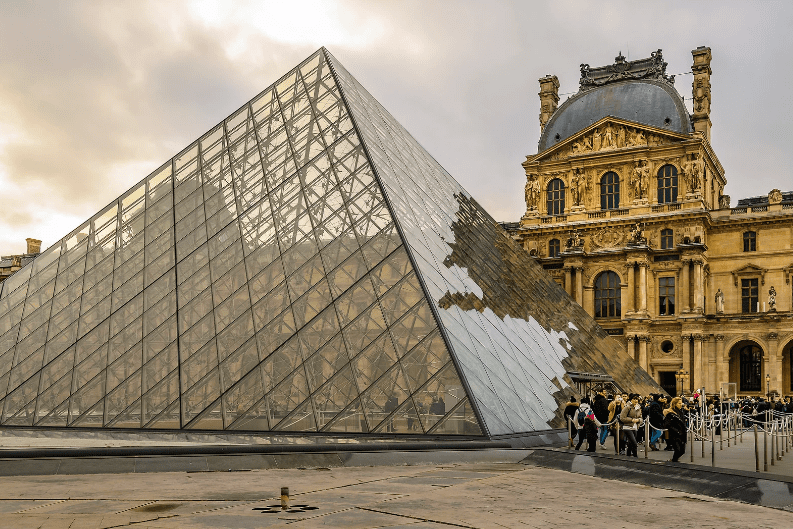
The Louvre stands tall as one of the world’s greatest art museums. Home to icons like the Mona Lisa and the Venus de Milo, it could take days to see it all. But don’t worry—the museum also has child-friendly walks, quiet courtyards, and secret corners.
Past visitors including kings, artists, and even Napoleon once called this place home. From Ancient Egypt to French masters, every room brings something new to discover. Make sure to wander the glass pyramid entrance, designed by architect I.M. Pei.
Notre-Dame Cathedral: A Tribute to Gothic Majesty

Notre-Dame is Paris’s heart, both in spirit and geography. Dating back almost 900 years, this cathedral’s spires and stained glass are Gothic art at its peak. Walking inside, you’ll see rose windows throwing rainbow colors onto stone floors.
Although the fire in 2019 changed its skyline, restoration work continues. Visitors still stand in awe of the flying buttresses, gargoyles, and sculpted doors that have survived wars and revolutions. Notre-Dame remains a symbol of hope and endurance.
Glittering Palaces and Gardens
France takes pride in its royal past. Castles and manors stretch from Versailles to the quiet riverside. Each palace tells stories of political drama, wild parties, and garden artists trying to outdo each other.
Versailles Palace: Walking in the Footsteps of Royalty

The Palace of Versailles is both dazzling and immense. Once King Louis XIV’s home, Versailles boasted the finest luxury in Europe. The Hall of Mirrors, with its endless glass and gold, once echoed with royal footsteps. Walk the grand gardens, designed by André Le Nôtre. They’re alive with fountains, secret groves, and trimmed hedges that stretch for miles.
Take a side trip to the Queen’s Hamlet, a rustic village built for Marie Antoinette’s escape from formal palace life. Even the gates, covered in gold leaf, shimmer in the morning sun.
Château de Chambord: A Renaissance Marvel in the Loire Valley

Hidden in the woods of the Loire Valley sits Château de Chambord, a castle built for show, not war. Its huge stone turrets look like something from a storybook. Inside, a double-spiral staircase unwinds, often said to be inspired by Leonardo da Vinci.
Outside, deer roam among the trees, a reminder of the castle’s old hunting roots. Chambord shows how Renaissance kings mixed Italian genius with French tradition. Take a guided tour or cycle the gardens to soak up the views.
Claude Monet’s Gardens at Giverny: Art Brought to Life

Famed painter Claude Monet found inspiration in the village of Giverny. Today, you can walk the same flower paths and see the lily pond that turned into his most famous paintings. Half garden, half open-air museum, Giverny blooms with color in spring and summer.
Visit Monet’s bubblegum-pink house, crammed with Japanese prints. Stand on the green footbridge over the pond and watch the water lilies shift with the light. For fans of impressionist art, it’s a brushstroke brought to life.
Exploring Magical Countryside Villages
Away from the crowds, France’s charming villages promise slow days and peaceful nights. Stone cottages, colorful flowers, and sleepy cafés line their quiet streets.
Alsace’s Colmar: A Fairytale Escape
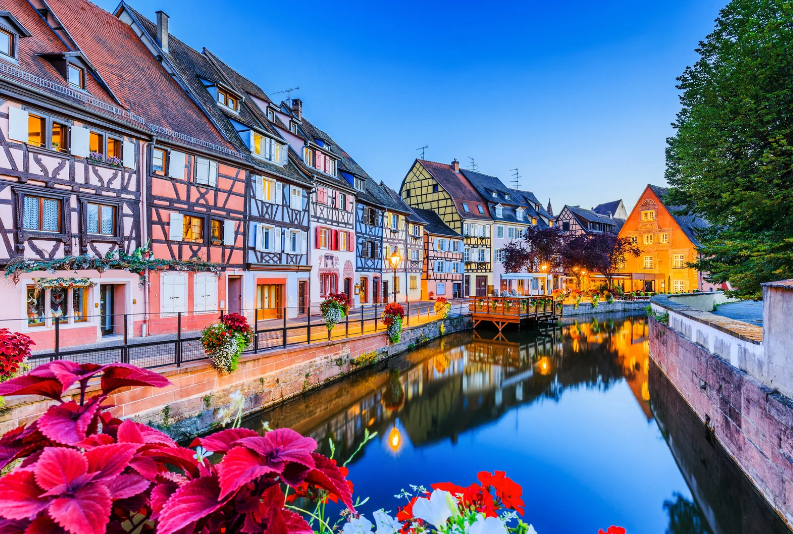
Colmar feels lifted from a story—half-timbered houses leaning over winding canals, painted in shades of pink, yellow, and blue. Nestled in the Alsace region, near the German border, it blends French and German traditions.
Little Venice is one of its prettiest spots, best seen by boat. Each spring, window boxes overflow with geraniums. In December, Colmar transforms into one of France’s finest Christmas markets.
Saint-Paul-de-Vence: Artistic Heritage and Cobbled Lanes

Known as a haven for artists, Saint-Paul-de-Vence in Provence quietly charms with its stone walls and winding lanes. Painters like Marc Chagall once strolled these streets seeking inspiration from the light and views.
Art galleries, wine bars, and little shops crowd the alleys. The town walls, built for defense, now offer perfect sunset views over olive groves and distant sea. Spend a slow afternoon wandering and you’ll see why so many creative legends called this village home.
Coastal Wonders and Sun-Soaked Escapes
From sparkling ports to ancient islands, France’s coasts never disappoint. Sunseekers, hikers, and swimmers find a mix of glamor and raw beauty.
French Riviera: From Saint-Tropez to Cannes

The French Riviera, or Côte d’Azur, glows with blue seas and golden sands. Saint-Tropez brings a celebrity buzz, expensive yachts, and hidden beaches like Plage de Pampelonne. Cannes hosts the famous film festival, but its old town, Le Suquet, has cobbled streets and fisherman’s boats bobbing close by.
Don’t miss Nice, famed for its pebbly beaches and candy-colored houses, or the regal Monte Carlo Casino in Monaco. Even small towns like Menton and Antibes hide secret gardens, museums, and top-notch seafood.
Mont Saint-Michel: The Island Abbey that Defies Time

Floating off the coast of Normandy lies Mont Saint-Michel, a medieval abbey perched above shifting tides. Sometimes it stands alone as an island; at low tide, you can walk across sandy flats.
Monks first built here in the eighth century, crafting a place for prayer and safety. Today, visitors climb winding stairs past shops and old church bells. At sunset, the view from the ramparts (fortified walls) is pure magic.
Journey to French Heritage Sites
France honors its past. From battlefields to castles, every heritage site opens a window into history and courage.
The D-Day Beaches of Normandy: Stories of Courage

The D-Day beaches—Utah, Omaha, Gold, Juno, and Sword—changed the course of history in 1944. Today, quiet sand and tall grasses hide reminders of the fierce World War II landings. American and Commonwealth cemeteries, memorials, and museums pay tribute to those who fell.
Visiting the Normandy American Cemetery or the Pegasus Bridge brings history to life. Stories from Allied soldiers and local townspeople make these beaches more than just a day by the sea.
Carcassonne: Entering a Medieval Fortress Town

Carcassonne looks just like a medieval picture book. Towers, drawbridges, and stone walls circle one of the best-preserved fortress towns in Europe. Walk the ramparts and watch the sun dip behind twin spires.
Inside, you’ll find cozy restaurants, artisan shops, and a castle museum (the Château Comtal). At night, golden lights transform Carcassonne into a story you can’t forget.
Wine, Food, and Flavors of France
No list of French attractions is complete without its food and wine. Regions are proud of their dishes and drink, turning every meal into a celebration.
Bordeaux Vineyards: Tasting Tours in Wine Country

The Bordeaux region’s vine-covered hills stretch as far as the eye can see. Wine lovers come to taste famous reds at châteaux like Margaux and Lafite Rothschild. Guided tours dive into wine-making secrets, from oak barrels to cellars that echo with age-old stories.
Even beginners will enjoy easy bike rides between villages like Saint-Émilion, visiting cellars and open-air farmers’ markets. The Cité du Vin in Bordeaux city tells the tale of wine around the world.
Lyon’s Culinary Scene: The Gastronomic Heartbeat
Lyon calls itself France’s kitchen—and for good reason. Chefs Paul Bocuse and Eugénie Brazier (both legends) put Lyon on the map. Small eateries called bouchons serve up local classics—think sausages swimming in wine sauce, or gooey cheese dishes like quenelles.
You’ll find fresh markets stuffed with chocolate, cheeses, and wild mushrooms. From fine dining to street snacks, Lyon is a treat for every taste and budget.
Natural Beauty and Outdoor Thrills
Nature lovers flock to France for wild lavender fields, winding rivers, and sky-high cliffs. There’s always something new to see.
Lavender Fields of Provence: A Summer Dreamscape
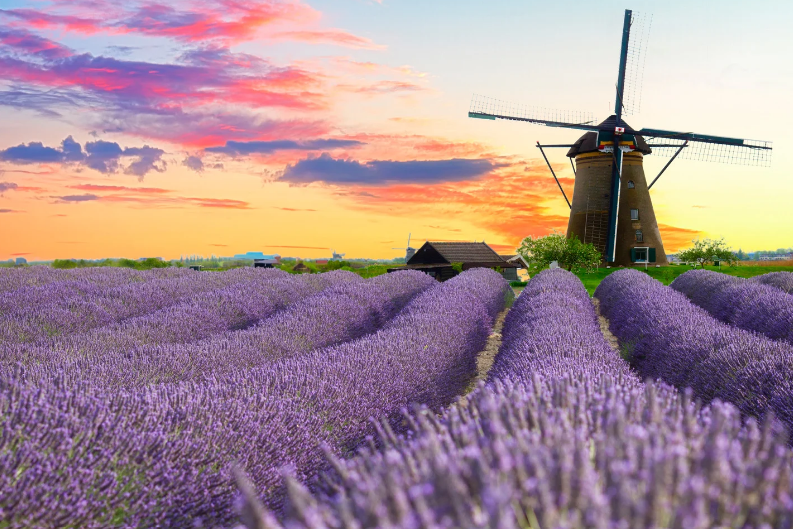
Each summer, Provence turns purple as fields of lavender bloom under the sun. The air smells sweet, and bees buzz along country roads. The area around Valensole and Sault is prime territory for photos and exploring.
Tiny villages hold lavender festivals, where you can taste honey, buy soaps, and watch how the flowers are harvested. Sunflowers often pop up, painting the landscape gold and purple all at once.
Verdon Gorge: France’s Grand Canyon Adventure

Verdon Gorge (Gorges du Verdon) is sometimes called Europe’s Grand Canyon. It carves a turquoise path between sheer cliffs, drawing thrill-seekers for kayaking, hiking, and even rock climbing.
A drive along the rim offers jaw-dropping views at every turn. Rent a paddle boat or simply find a shady spot to watch birds soar overhead. For families, there are easy walking paths and picnic spots aplenty.
Alpine Splendor and Winter Retreats
When winter comes, France’s mountains come alive with skiers, boarders, and snowy silence.
Chamonix-Mont-Blanc: The Peak of Adventure Sports

At the foot of Mont Blanc, western Europe’s tallest mountain, you’ll find Chamonix. From the first Winter Olympics to today’s world-class slopes, this town is all about outdoor fun.
Skiers chase powder until spring, hikers follow high trails in summer, and everyone enjoys heart-stopping cable car rides over icy glaciers. Shops sell chocolate and mountain gear, while sunny cafés offer a warm escape.
Annecy: The Venice of the Alps

Annecy is a lakeside town draped in flowers, with canals that twist under stone bridges. Its old town glows with pastel buildings and narrow alleys, while swans skim across Lake Annecy’s clean water.
In summer, people swim, sail, or take boat rides, enjoying mountain views in the background. Try local cheese dishes or rent a bike to circle the lakeshore. The mix of French and Swiss influence makes Annecy feel special every season.
Undiscovered Gems and Local Secrets
Beyond the postcard icons, France keeps plenty of secrets for the traveler ready to look a little deeper.
The Pink Granite Coast: Brittany’s Colorful Wonder
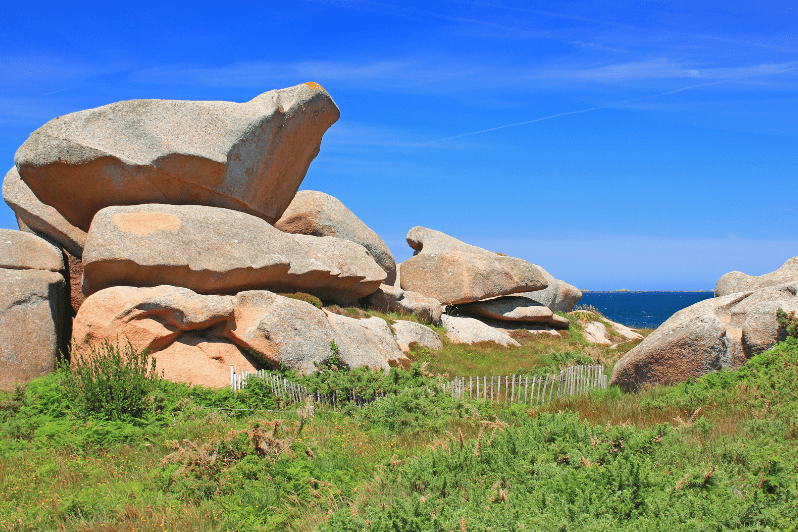
Brittany’s Côte de Granit Rose (Pink Granite Coast) is famous for its pale rocks, weather-sculpted into smooth shapes. The walking trail (Sentier des Douaniers) curves between coves, hidden beaches, and tiny fishing ports like Ploumanac’h.
Sunset turns everything a glowing rose-gold. It’s less crowded and more relaxed than the beaches further south, making it a peaceful spot for nature lovers and photographers.
Lille’s Old Town: Culture at the Crossroads of Europe
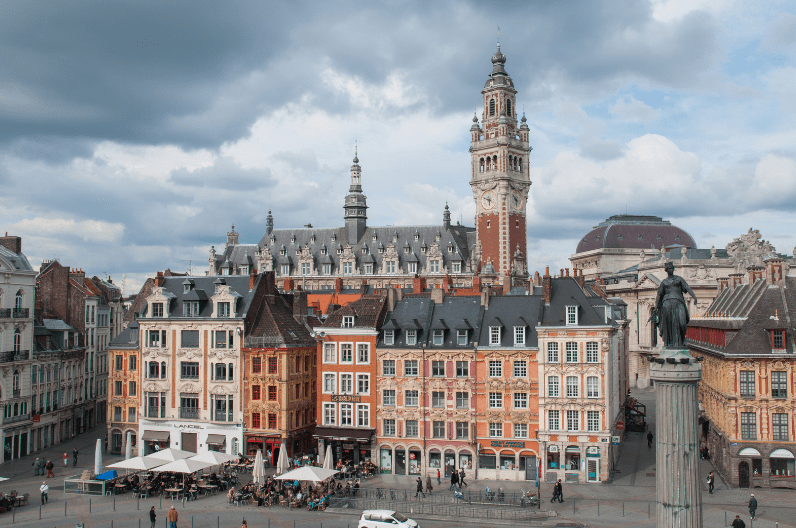
Set near Belgium, Lille feels both French and Flemish. Old Town (Vieux-Lille) is full of fancy facades, lively squares, and art museums like Palais des Beaux-Arts.
Markets brimming with waffles and cheese, quirky boutiques, and a buzzing café culture give this city energy. Each September, Lille hosts the Braderie, Europe’s largest flea market—an event bursting with music, street food, and finds for every taste.
Tips for Crafting Your Ultimate French Itinerary
Choosing where to go in France can feel overwhelming. Start by asking what matters most. Is it seeing historic sites, tasting local food, or just relaxing in nature?
Combine big cities like Paris with a few small villages for contrast. If you love art, plan for museums (buy tickets in advance when you can). History buffs might build a trip around castles, old towns, and war memorials.
Check train timetables—France’s high-speed TGV trains link major towns easily. For rural areas or vineyard-hopping, renting a car brings more freedom. Don’t forget the seasons: Lavender blooms in summer, skiing is best in winter, and the Riviera shines in spring and early autumn.
Leave time to wander, try new food, and meet locals—often that’s where the happiest surprises happen.
Conclusion: Embrace the Best of France—A Journey for Every Traveler
France stirs the heart in a way few places can. Whether you’re gazing at the Eiffel Tower, wandering flower-filled villages, hiking rocky coasts, or toasting friends in a cozy bistro, there’s always something to remember. Balance big-name sights with hidden wonders. Savor France’s famous flavors, but also its quiet mornings and breezy afternoons.
Planning ahead helps, but leave space for the little moments—those become the best stories. Book main attractions early, learn a few French words, and let yourself get lost now and then. From icons like Paris and Versailles to gems like Colmar and Annecy, France welcomes everyone ready for adventure, heritage, and a taste of la joie de vivre.
When you return, you’ll bring back much more than pictures—you’ll have a piece of France in your heart. Start with what calls to you, keep an open mind, and fall in love with this remarkable country one place at a time.
Got questions about Tourist Attractions in France? Here are the answers travelers look for most
1. What are the most popular tourist attractions in France?
France is full of famous sights like the Eiffel Tower, the Louvre Museum, and Mont Saint-Michel. Other top tourist attractions in France include Versailles Palace, Côte d’Azur beaches, and the French Alps. Each place offers its own charm, culture, and history worth exploring.
2. What are the best tourist attractions in Paris, France?
Paris is packed with must-see spots such as the Eiffel Tower, Notre-Dame Cathedral, and the Louvre Museum. Don’t miss Montmartre, the Arc de Triomphe, and the Seine River cruises. These top tourist attractions in France make Paris unforgettable.
3. Which tourist attractions in France are good for families?
Families love Disneyland Paris, Parc Astérix, and the Aquarium de Paris. Outdoor sites like the Loire Valley castles and Provence lavender fields also suit kids. These family-friendly tourist attractions in France mix fun, learning, and nature.
4. What are the top historical tourist attractions in France?
Explore Normandy’s D-Day beaches, Mont Saint-Michel, and the Palace of Versailles. In Carcassonne, the medieval walls tell old French tales. Historical tourist attractions in France give deep insight into the nation’s past.
5. Which tourist attractions in France offer great views?
The Eiffel Tower, Montparnasse Tower, and the cliffs of Étretat have stunning views. The French Riviera coastlines and the Alps also impress. These scenic tourist attractions in France are perfect for photos and relaxation.
6. What are the hidden tourist attractions in France worth visiting?
Head to Annecy, Colmar, or Rocamadour for quiet beauty. The Verdon Gorge and Alsace villages stay less crowded. These hidden tourist attractions in France offer peaceful and authentic experiences.
7. What are the best beach tourist attractions in France?
Cannes, Nice, and Saint-Tropez are known for glamorous beaches. Biarritz and Corsica offer wild coastal beauty. Beach tourist attractions in France mix luxury, surf, and scenic charm.
8. What are the top cultural tourist attractions in France?
Visit the Louvre, Musée d’Orsay, and the Opéra Garnier. Lyon’s Old Town and Avignon’s Palais des Papes highlight French heritage. Cultural tourist attractions in France showcase art, history, and architecture.
9. Which tourist attractions in France are free to visit?
Many Paris parks like Luxembourg Gardens and Tuileries are free. Churches such as Sacré-Cœur and Notre-Dame have no entry fee. Free tourist attractions in France let you enjoy more without spending much.
10. What are the best natural tourist attractions in France?
The French Alps, Verdon Gorge, and Calanques National Park top the list. The Camargue wetlands and Loire Valley are also stunning. Natural tourist attractions in France blend outdoor beauty with peace.
11. Which tourist attractions in France are ideal for couples?
Couples enjoy Seine River cruises, lavender fields in Provence, and Paris rooftops. Mont Saint-Michel at sunset is magical. Romantic tourist attractions in France create lasting memories.
12. What are the most visited tourist attractions in France each year?
The Eiffel Tower, Louvre Museum, and Versailles Palace attract millions. Disneyland Paris also draws huge crowds. These top tourist attractions in France lead global visitor numbers.
13. What are the top wine-related tourist attractions in France?
Visit Bordeaux vineyards, Champagne houses in Reims, and Burgundy wine trails. Each region has tastings and tours. Wine tourist attractions in France are perfect for learning and sipping.
14. Which tourist attractions in France are UNESCO World Heritage Sites?
Sites like Mont Saint-Michel, Chartres Cathedral, and Vézelay Basilica hold UNESCO status. The Loire Valley and Pont du Gard also qualify. These tourist attractions in France are protected treasures.
15. What are the best art-related tourist attractions in France?
See the Louvre’s Mona Lisa, Musée d’Orsay’s Impressionist art, and Centre Pompidou’s modern works. Nice’s Matisse Museum is another gem. Art tourist attractions in France inspire creativity.
16. Which tourist attractions in France are near the Alps?
Chamonix, Annecy, and Grenoble sit close to the Alps. Visitors enjoy cable cars, lakes, and mountain trails. These alpine tourist attractions in France mix adventure with charm.
17. What are the top religious tourist attractions in France?
Notre-Dame Cathedral, Lourdes Sanctuary, and Mont Saint-Michel Abbey draw many pilgrims. Chartres Cathedral is another highlight. Religious tourist attractions in France combine faith and beauty.
18. Which tourist attractions in France are best in winter?
Ski resorts in Chamonix, Val d’Isère, and Courchevel shine in winter. Paris lights up for the holidays. Winter tourist attractions in France offer both snow and city joy.
19. What are the best countryside tourist attractions in France?
The Loire Valley châteaux, Provence villages, and Dordogne riverside towns are stunning. Burgundy and Alsace offer peaceful scenery. Countryside tourist attractions in France reveal rural charm.
20. Which tourist attractions in France are near the French Riviera?
Nice, Cannes, and Monaco sparkle along the coast. Don’t miss Eze Village and Antibes. Riviera tourist attractions in France blend sea views, luxury, and culture.


